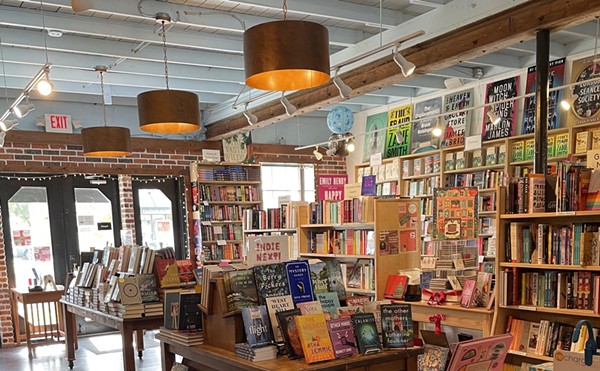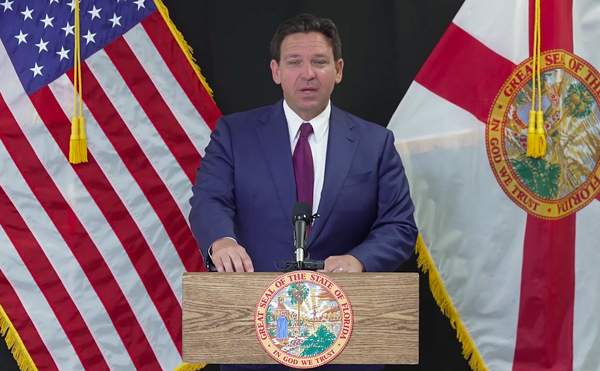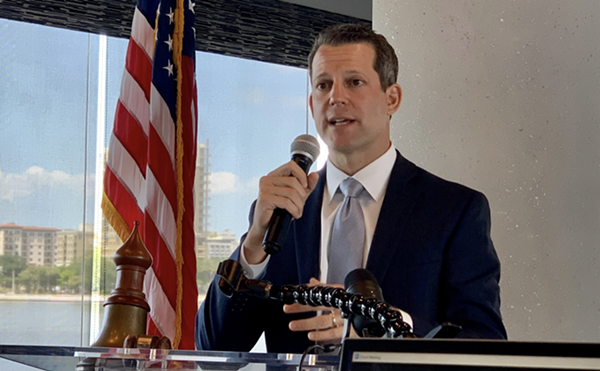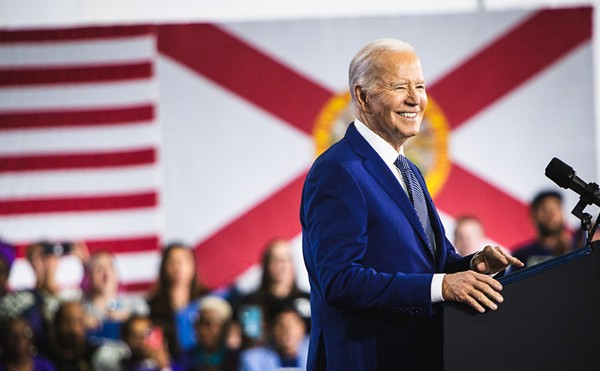Please don't ask him what will happen in Cuba when Castro dies.
That was Marco Castillo when he began his gallery talk at Graphicstudio recently. One-third of a Cuban artists' collective called Los Carpinteros, Castillo was here to begin a multi-year collaboration with the University of South Florida College of Visual and Performing Arts, Graphicstudio and the Contemporary Art Museum.
The projects they're working on are witty and highly political, but the politics transcend Castro. Rather, the work addresses global issues — albeit filtered through the unique lens of three young artists coming of age in the aftermath of 1980s Cuba. "The 1980s in Cuba were like the 1960s in the United States," Castillo explained, speaking a mixture of Spanish translated by Graphicstudio's Curator of Education, Noel Smith, and English.
Young people were in revolt against the government and most of the artists left the country in response to increasing censorship and punishment. Marco Castillo, Dagoberto Rodriguez and Alexandre Arrechea were just finishing art school at the time. "We were in our 20s and we were the oldest artists," said Castillo. The three were working together using carpenters' hand tools to create wooden objects and their classmates dubbed them Los Carpinteros: The Carpenters.
The name suited the three because they were interested in the way objects were made and because they questioned the division between high art and craft. The name also had a sense of solidarity with trade unions — and an element of subterfuge at a time when artists were watched closely. "We were not artists; we were just carpenters making simple objects." Devastatingly simple.
One piece is a finely crafted, wooden, seven-foot-high hand grenade; the facets of its body are drawers with round handles. The simple design and plain, unvarnished wood give the piece a generic, almost sterile feel. But the image of the hand grenade-cum-chest-of-drawers is so simultaneously militaristic and domestic that its mordant humor evokes laughter. You can picture the drawers blowing out in all directions, spewing the most private of possessions and turning dull drawer pulls into deadly missiles.
Los Carpinteros' participation in the 1994 Havana Biennial launched their international career, and they have since exhibited in Berlin, Antwerp, Madrid, Geneva, New York, Johannesburg, Los Angeles, Milan, Caracas and Vancouver, to name a few. Their most famous and well-traveled installation is called "Transportable City," a grouping of 10 urban buildings — a school, a prison, a capitol, a church, a lighthouse, a factory — made of aluminum tubing and nylon, assembled like tents and large enough to enter.
The idea, said Castillo, was inspired by the forced migration of people because of government actions and the longing émigrés feel for their home. "With this, you can take your city with you." Franklin Sirmans called the project a "mythical metropolis located at the intersection of sculpture and architecture" in The New York Times.
Los Carpinteros are a true artists' collective. All their art bears the collective credit and none of the three works individually. Even this choice is political. "No creation is absolutely original," said Castillo. "You always get your inspiration from other artists."
As collaborative artists, Los Carpinteros are uniquely suited to the atmosphere of Graphicstudio, where master artisans work with artists to fabricate work in multiple editions and sometimes investigate new media.
One piece Los Carpinteros are working on in Tampa is in a familiar medium: a two-meter-long missile made of wooden breadboxes handcrafted by Bob Ballard. The image of a weapon of mass destruction appearing to bear sustenance is again caustically humorous, calling to mind our own definition of nation building.
Another project represents a new medium for the group: a series of prints made from x-ray machines like those used for airport security. The project again explores the intersection of personal and militaristic imagery. "We wondered what the security guards would think of things they saw in our luggage," said Castillo. Assisted by Graphicstudio studio manager Tom Pruitt and director Margaret Miller, Castillo began by exploring x-ray images of an assortment of objects, from sex toys to statues of saints. They discovered the x-rays revealed the inner workings of the objects and the way things were put together, giving the images a whole new level of meaning, which may eventually figure into the final works.
Getting access to security scanning equipment for a group of Cuban men was a challenge in itself. "It's not great timing," said Pruitt with a chuckle. They did, however, manage to use a government-owned machine for one night of experimentation though they ended up having to use a medical x-ray machine at the university's College of Medicine for later tests. Pruitt isn't sure yet how they'll produce the final works.
The third project is part of an even larger collaboration: a Tampa Bay biennial (biannual international art show) beginning in 2005 and featuring Cuban art the first year.
The biennial will also present an opera based on the works of Alejandro Garcia Caturla, a Cuban composer working in the 1920s and '30s who first merged European classical and African music in modern composition. USF music professor and composer Jim Lewis has been researching Caturla for several years and is composing the opera. Graphicstudio's Smith is writing the libretto and Los Carpinteros will design the sets.
Margaret Miller, director of the newly formed Institute for Research in Art, which operates Graphicstudio and the Contemporary Art Museum (which she founded), is the mastermind behind the biennial, which will showcase cutting-edge art from a different Latin American or Caribbean nation every two years. Miller has long been a major cultural force at the university, and College of Visual and Performing Arts Dean Ron Jones was wise to expand her power. Together, they are building bridges to Latin America in ways business and political leaders never could.
Senior Editor Susan F. Edwards can be reached at [email protected] or 813-248-8888 ext. 122.
















